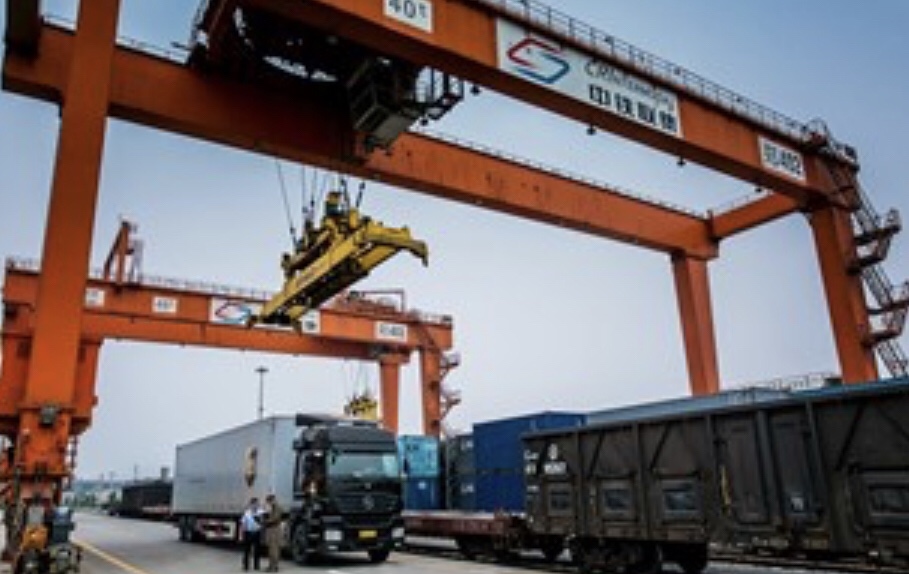A new world trade paradigm
Global trade needs a reboot to expand the global economy says David Abney , Chief Executive Officer and Chairman at UPS.
In recent years free trade has come under criticism from populists who blame it for every lost factory job. In reality trade has been responsible for fewer job losses than automation, a technological force much harder to reverse. So while trade has made for a popular scapegoat, the truth is cross-border commerce has played an underappreciated role in producing the inclusive global prosperity we have enjoyed over the past 60 years.

Economic study after economic study has proven trade played a major role over the past half-century in boosting employment, incomes and average life spans. It has led to associated declines in poverty, child and slave labor and even military conflicts. One study of 40 economies also found that trade increased the purchasing power of lower-income households by about two-thirds as they spend more on basic goods that are often imported, like food and clothing.
That is evidence to the contrary, and the criticisms are not likely to go away. If advocates of free trade were honest, they would admit that the global trading system has not kept up with the changes in global commerce. They would also acknowledge that the long-term benefits have been substantial on a macroeconomic level, while the short-term losses have been felt on a more personal level.
To win over the critics, global trade needs a major refresh. Here are four areas where we can start.
Since its inception in 1995 the World Trade Organization (WTO) has faced its share of criticisms, including concerns that processing cases takes too long and too many countries ignore the notification rules. It is easy to forget that before its founding the world trading system was perceived as a club controlled by the world’s biggest economies, one that resisted any change to the status quo. The creation of the WTO accelerated the liberalization of trade and gave countries both large and small a dispute settlement system guided by the rule of law, not power. As a result, more countries have been willing to bring their grievances to the WTO.
Reform the WTO
Though the WTO is not perfect, the global trading system needs a strong governing body at its core. The WTO’s rule-based system provides the predictability and accountability that businesses need before they invest. Given that, the WTO should be reformed, not replaced. The first steps would be for it to reform the transparency and notification system and speed up the dispute settlement process.
Modernize Trade Laws
Whether regional, global or bilateral, many of today’s trade agreements were written in an era when manufacturing drove the global economy. Today the service industry is a much bigger force and services such as information technology, logistics, architecture, law and accounting now trade easily across borders.
What’s more, many forms of commerce – including retail – are now digital. Cross-border e-commerce is expected to hit nearly $1 trillion by 2020 but trade regulations have not kept pace. Only 20% of regional trade agreements address such e-commerce issues as transparency, data protection and paperless trading and it is imperative that trade laws catch up to the times.
Streamline Customs
While tariffs get the most attention, what really inflates the cost of trading are non-tariff measures such as needless customs inefficiencies and the quotas, licensing and local-content laws designed to protect domestic producers. The WTO Trade Facilitation Agreement (TFA) ratified in early 2017 could help cut the red tape and bureaucracy that needlessly increase the cost of trading.
If implemented wisely, the TFA could cut trading costs by up to 15%, facilitating a $1 trillion expansion in global trade. This will require policymakers everywhere to act in good faith as they enact customs reforms. That will require free-trade proponents to push governments around the world to do the right thing.
Making Trade Inclusive
If there is any valid criticism of the existing trading system, it is that trade creates winners and losers in the short term. So even if trade has been overwhelmingly positive over the long run, we need to give more consideration to the workers displaced by trade or technology efficiencies – and to the small businesses that could trade more. A trading system is sustainable only if everyone shares in the benefits. Therefore we must ensure that trade is more inclusive and helps support sustainable development.
Governments also must create better safety nets for workers who lose their jobs to trade flows or technology. What that assistance looks like will vary by country, given the cultural differences that exist around the world. In some countries this assistance can subsidize the cost of retraining workers through classes or on-the-job apprenticeships. In others it can include wage and health insurance, even special assistance to affected businesses and farmers. While countries should tailor their approaches to their social policies, the WTO and the business community can help promote best practices.
Over the past decade regional or even bilateral trade agreements have become more popular, a reflection of the difficulties in finding consensus among the WTO’s 164 member nations. However, for trade to drive global growth – and for that growth to be shared more widely – governments, businesses, non-governmental organizations and others must make a concerted effort to work together.
Those of us who advocate for trade understand the economic benefits of allowing goods and services to flow freely across borders. A 21st-century trading system will also enable governments to improve environmental standards and labour standards. Before we can make the case for global trade, we must make a convincing argument that a 21st century trading world calls for a 21st-century policy environment in which free trade benefits everyone.
Source: ITC International Trade Center
You must be logged in to post a comment.